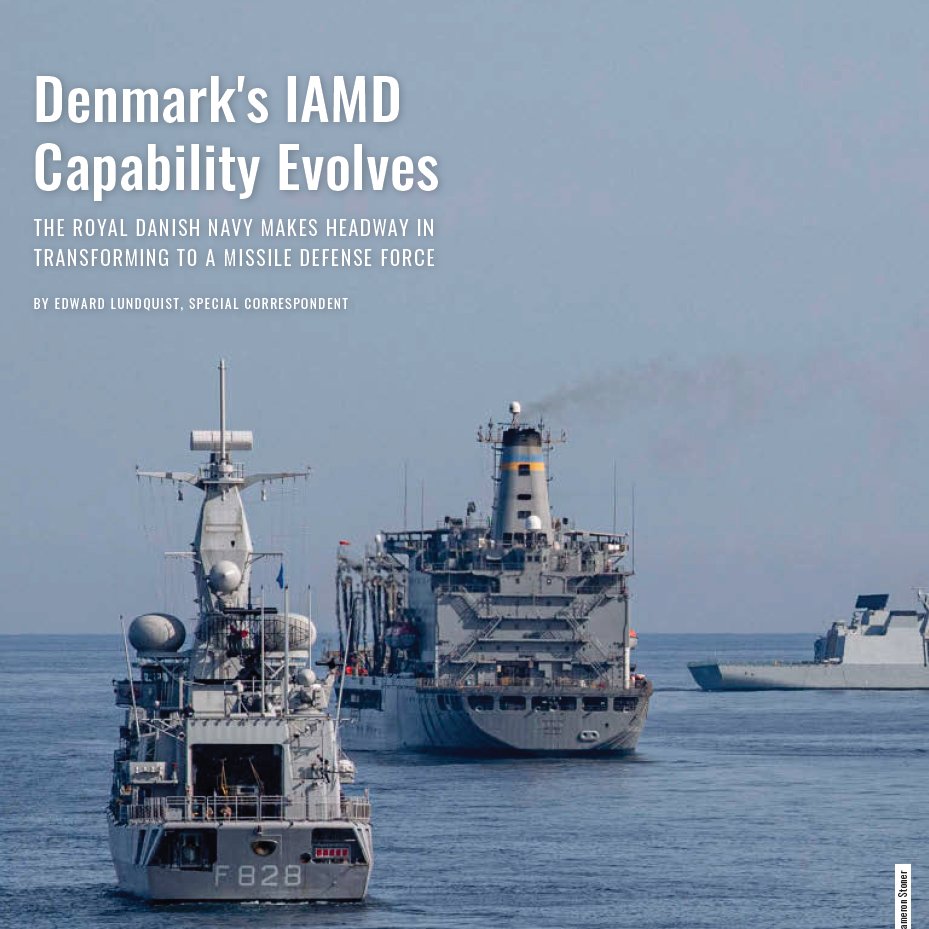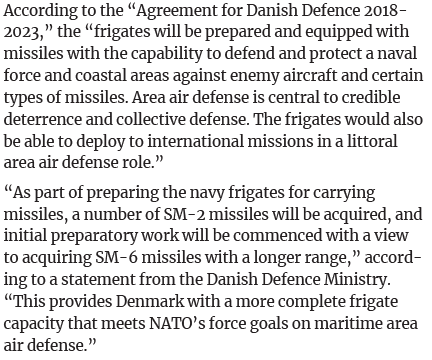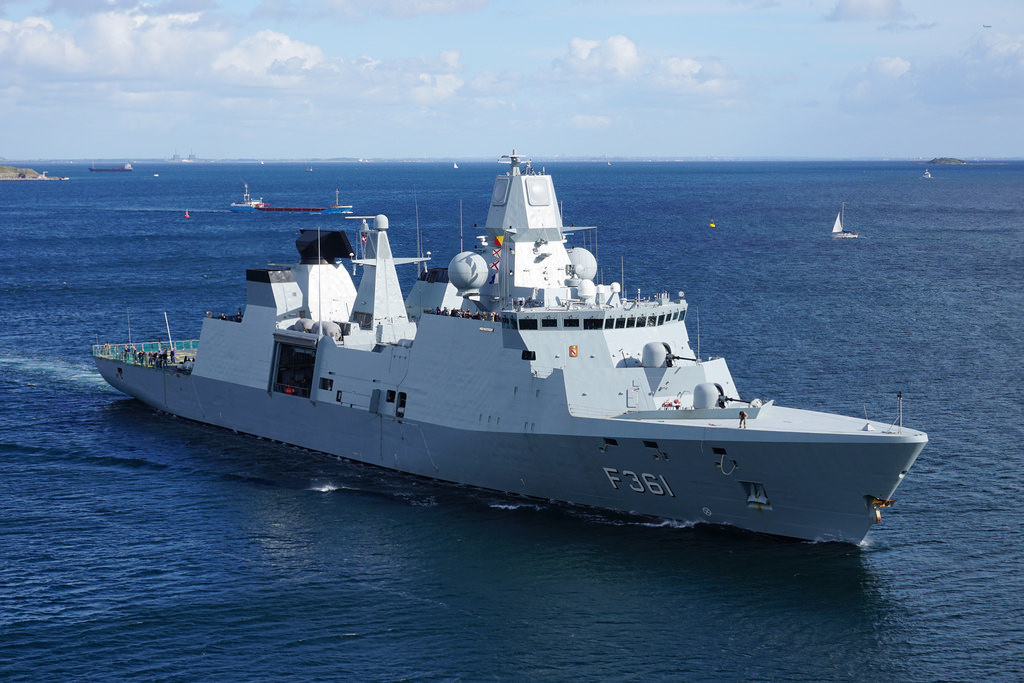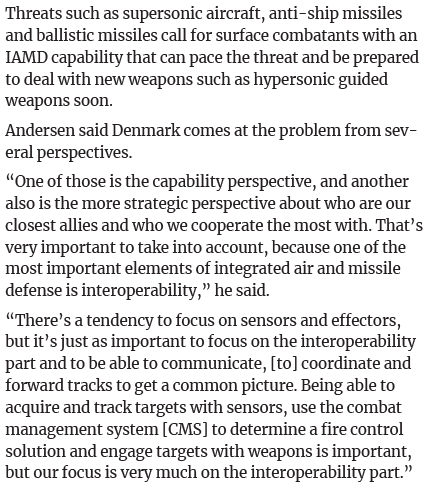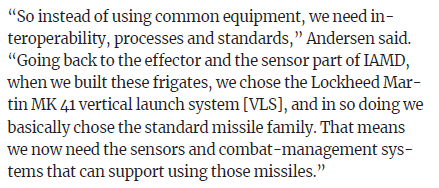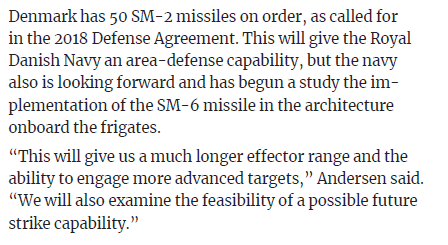"Aegis Ashore (AA) is equipped with Mk41 VLS that can fire Tomahawk missiles and therefore in violation of the INF treaty".
While true that Mk41 can fire Tomahawk, it doesn't mean that AA in Europe can fire Tomahawk.
This thread will try to explain what the Mk41 is - and isn't.
While true that Mk41 can fire Tomahawk, it doesn't mean that AA in Europe can fire Tomahawk.
This thread will try to explain what the Mk41 is - and isn't.

Caveat: All information in this thread is based on open sources.
Someone might have questions that exceed what can be found in open sources, and since I don't want to go to jail, I will not be answering those questions.
Someone might have questions that exceed what can be found in open sources, and since I don't want to go to jail, I will not be answering those questions.
What most people don't realize is that launching a missile is done in cooperation between the Mk41 and the weapon system. In AA, the weapon system is Aegis, but in other navies it could also be another weapon system
Without the weapon system, it is impossible to launch a missile
Without the weapon system, it is impossible to launch a missile
The Mk41 is basically a steel framework, much like a scaffolding, and some electronics to manage the Mk41 and the launch sequence. Also it has a very advanced water system, that can flood the launcher to protect the ship in case of hangfires etc. 

To make the round missiles fit into the square holes in the launcher, the missiles are kept in canisters, which also provide environmental protection, electrical interfaces etc.
In theory, any missile can be inserted into the Mk41 as long as a canister that fits can be made.
In theory, any missile can be inserted into the Mk41 as long as a canister that fits can be made.

When a missile is launched, the cell door opens and the exhaust and flames are vented through an exhaust vent between the canisters. 

As Mk41 module consists of 8 cells. Several modules can be combined into bigger launchers.
US Navy destroyers have 96 cells, cruisers have 132 and AA have 24.
Some of the MK41 electronics are installed in equipment rooms on the ship and not on the actual launchers.
US Navy destroyers have 96 cells, cruisers have 132 and AA have 24.
Some of the MK41 electronics are installed in equipment rooms on the ship and not on the actual launchers.
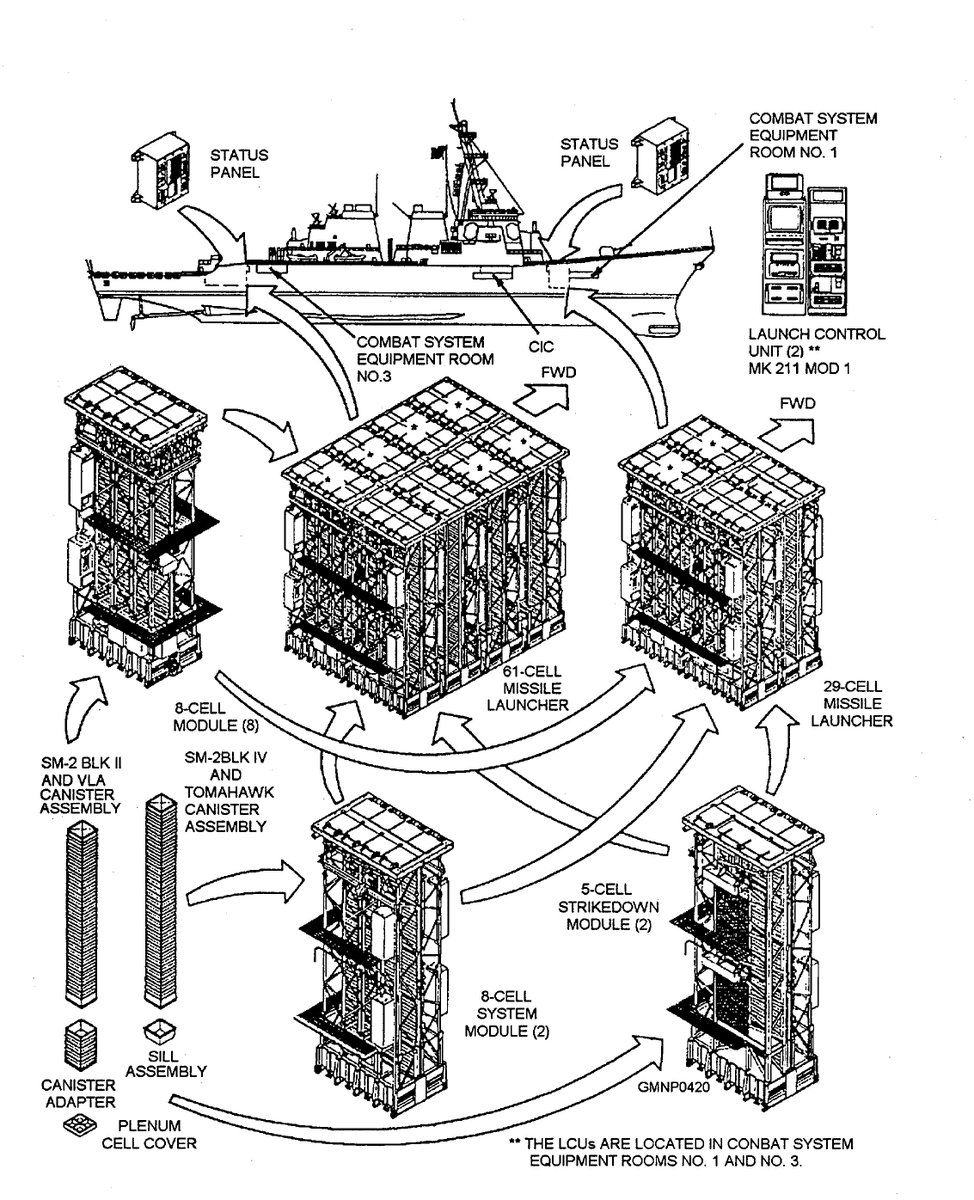
The Danish Navy IVER HUITFELDT AAW Frigate class has 32 cells, midship.
They are currently being equipped with SM-2 Block IIIA missiles.
Also studies for a following purchase of SM-6 missiles are being performed.
They are currently being equipped with SM-2 Block IIIA missiles.
Also studies for a following purchase of SM-6 missiles are being performed.

One final comment on the fact that Mk41 is actually a steel scaffolding: When I first got to walk inside a Mk41 (there are walkways between the modules), it was one of the most underwhelming experiences on a warship, ever. Nothing but steel frames and some cabling 🤷♂️
The electronics in the Mk41 are:
- Launch Control Unit (LCU)
- Launch Sequencer (LSEQ)
- Motor Control Panel (MCP)
- Power Supplies.
The LSEQ provides the canister umbilical cables, that connect the missiles in the canisters to the Mk41.
- Launch Control Unit (LCU)
- Launch Sequencer (LSEQ)
- Motor Control Panel (MCP)
- Power Supplies.
The LSEQ provides the canister umbilical cables, that connect the missiles in the canisters to the Mk41.

The LSEQ also controls the MCP, which opens the cell latch door during the launch procedure.
The LCU is the interface to the weapon system and initializes the launch procedure through the LSEQ, once a launch order is received from the weapon system.
The LCU is the interface to the weapon system and initializes the launch procedure through the LSEQ, once a launch order is received from the weapon system.
This illustration is the essential piece in this thread. It shows how the Mk41 is integrated with the weapon system and which component does what.
Notice, specifically how the weapon system makes all tactical decisions regarding launch and orders the Mk41 to launch the missiles.
Notice, specifically how the weapon system makes all tactical decisions regarding launch and orders the Mk41 to launch the missiles.

This is why, I keep saying: The Mk41 absolutely cannot launch a missile without the weapon system.
Example: The Danish navy's frigates cannot launch Tomahawks, even though they have Mk41. This is simply because the weapon system doesn't support the Tomahawk missile.
Example: The Danish navy's frigates cannot launch Tomahawks, even though they have Mk41. This is simply because the weapon system doesn't support the Tomahawk missile.
This illustration shows the Aegis Weapon System and the Mk41 VLS.
As can be seen, there is a component named the TWCS (Tomahawk weapon control system) that's part of the architecture. If that component isn't there (and the WCS doesn't support Tomahawk) Tomahawk cannot be fired.
As can be seen, there is a component named the TWCS (Tomahawk weapon control system) that's part of the architecture. If that component isn't there (and the WCS doesn't support Tomahawk) Tomahawk cannot be fired.

For each missile type that is put into the Mk41, there is dedicated hardware and software that must be integrated into the Weapon System so allow deployment of that missile - without it, the missile type cannot be launched.
To repeat (again): If the AA sites in Europe doesn't have the appropriate hardware and software in the weapon system, it doesn't matter that the Mk41 can launch a Tomahawk - that AA system is not capable of launching Tomahawks.
Obviously, short of visual inspections, there is no way to determine if the appropriate hardware and software is actually installed, but personally I doubt it, based on both open source information as well as other sources.
I'll leave it to other wonks to debate if the Mk41 in itself was in violation of the INF in AA, but I will offer this definition of a "launcher"
"4. The term "GLCM launcher" means a fixed launcher or a mobile land-based transporter-erector-launcher mechanism for launching a GLCM"
"4. The term "GLCM launcher" means a fixed launcher or a mobile land-based transporter-erector-launcher mechanism for launching a GLCM"
The above text is from the INF treaty:
2009-2017.state.gov/t/avc/trty/102…
In my view, the Mk41 doesn't qualify as a "launcher" in itself, simply because it isn't capable of launching a missile without the weapon control system.
In my view: Launcher = Mk41 + Weapon System.
2009-2017.state.gov/t/avc/trty/102…
In my view, the Mk41 doesn't qualify as a "launcher" in itself, simply because it isn't capable of launching a missile without the weapon control system.
In my view: Launcher = Mk41 + Weapon System.
Obviously, if the AA sites have the appropriate Tomahawk hardware and software installed as part of the weapon system, they were in violation of the INF treaty. If they don't have the components installed, I don't believe they were in violation as they can't launch Tomahawks.
I hope this thread was information about what the Mk41 Vertical Launch System is, how it works, is integrated with a weapon system - but certainly also, what it isn't and what is doesn't do.
Of possible interest to:
@nktpnd, @NarangVipin, @tomkarako, @EricGomezAsia, @mgerrydoyle, @nukestrat, @anderspuck, @KarstenMarrup, @jamiewithorne, @clausmat1, @MarcinNiedbala, @hphmic, @MIL_STD
@nktpnd, @NarangVipin, @tomkarako, @EricGomezAsia, @mgerrydoyle, @nukestrat, @anderspuck, @KarstenMarrup, @jamiewithorne, @clausmat1, @MarcinNiedbala, @hphmic, @MIL_STD
And of course @PaperMissiles
• • •
Missing some Tweet in this thread? You can try to
force a refresh




